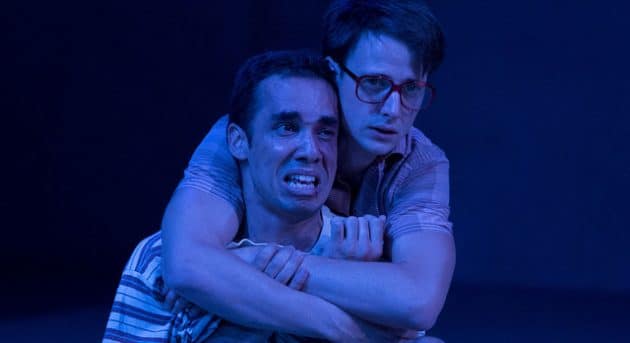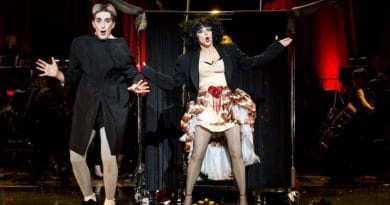Jasper Jones – Belvoir Return Season
We go to the theatre for the stories. We go to practise empathy and experience the lives of people whose stories are both similar and different to our own. Theatre’s mainstream sibling, cinema, is often saturated by Hollywood films, so, we rely on theatre to tell the local Australian stories that don’t find voices elsewhere.
Now at Belvoir, we have Jasper Jones, a book-turned-play that will, luckily, debut as a feature film this year. Kate Mulvany’s adaption of Craig Silvey’s bestselling Australian novel is in its second year at the company after a sold-out run in 2016.

It’s 1965 in the fictional rural town of Corrigan, and a local teenage girl goes missing in the night. Introverted, bookish thirteen year old, Charlie (Tom Conroy) is recruited by Jasper Jones (Guy Simon) to solve the mystery; if they can’t figure it out, Jasper – an Indigenous teen who is the myopic town’s regular scapegoat – will surely be charged with the crime. Meanwhile, Charlie tries to continue his life as normal: awkwardly wooing Eliza, the missing girl’s sister (Matilda Ridgway), mucking about with his friend Jeffrey (Charles Wu), and ignoring the fact that his parent’s marriage isn’t what it used to be.
When adult actors impersonate children and teenagers, it’s easy for their performances to verge on caricatures. However the cast, most of whom are reprising their roles from the 2016 production, infuse their characters with a relatable, honest energy. Conroy has a charming awkwardness as the story’s narrator and central character. His bumbling attempts to converse with Ridgway’s quiet Eliza are a joy to watch. Charles Wu is having a ball here as Charlie’s charismatic and cheeky friend Jeffrey, and in sharp contrast, Guy Simon plays it straight as the titular Jasper Jones; he carries the play’s more serious moments with heart wrenching naturalism.
Composer Steve Toulmin’s music loudly dictates the tone of each scene and, in a more serious work of realism, this might have been too much. However, in this case, it works well with the show’s larger-than-life atmosphere. Michael Hankin’s flexible, spinning set pieces allow the story to jump quickly between scenes as Charlie’s house rapidly transforms to Mad Jack Lionel’s front door, Jeffrey’s front yard and back again.
Mulvany’s adaptation keeps the mood of Silvey’s novel; she skillfully treads a fine line between dark, heavy themes and glorious moments of comedy. Charlie and Jeffrey’s frank yet silly friendship translates charmingly to the stage. One of the play’s most rousing scenes involves a tense and exciting cricket game that sees Jeffrey take on Warwick, the loudmouth bully (Kate Box nearly steals the show at this point).
The murder-mystery narrative ends clumsily, but the story is so much more than a simple whodunit. It never takes easy shots, like attributing the girl’s death to the shady neighbourhood recluse, and there are shades of To Kill a Mockingbird in its approach to small-town prejudice.
Under director Anne-Louise Sarks the play feels almost too focused on the cheerful nostalgia of being a teenager in the 60s. But just when you’re feeling comfortable, Sarks violently shifts gears, reminding audiences that the 60s weren’t so idyllic after all; there’s insidious racism lurking behind every fond memory.
Set in the ‘assimilation’ period of Indigenous Australian government policy, Jasper is not accepted by the locals.The background of conscription in the Vietnam War provokes town-wide antagonism towards Jeffrey’s family, as well; there are dark thoughts all over this play. But, with the exception of a powerful moment of police brutality towards young Jasper, most of this intolerance is revealed through the young people’s dialogue. Their naive and truthful take on the hatred means that it doesn’t feel heavy-handed.
This prominent racism is not shrunk into a single character but instead, exists only as a shadowy mob. They beat Jasper, vandalise Jeffrey’s home, and then disappear into the darkness. This is a powerful staging choice, as without a specific human form, they can exist for the audience as people they know from their own lives. In this way, the townspeople are all the more menacing because of their anonymity and strength in numbers.
Jasper Jones strikes a fine balance between an upbeat show about growing up, and a dark exploration of the injustice of Australian culture in the 60s. At a time where racial intolerance is rearing its ugly head, a story that finds optimism in the darkness is a welcome change.




